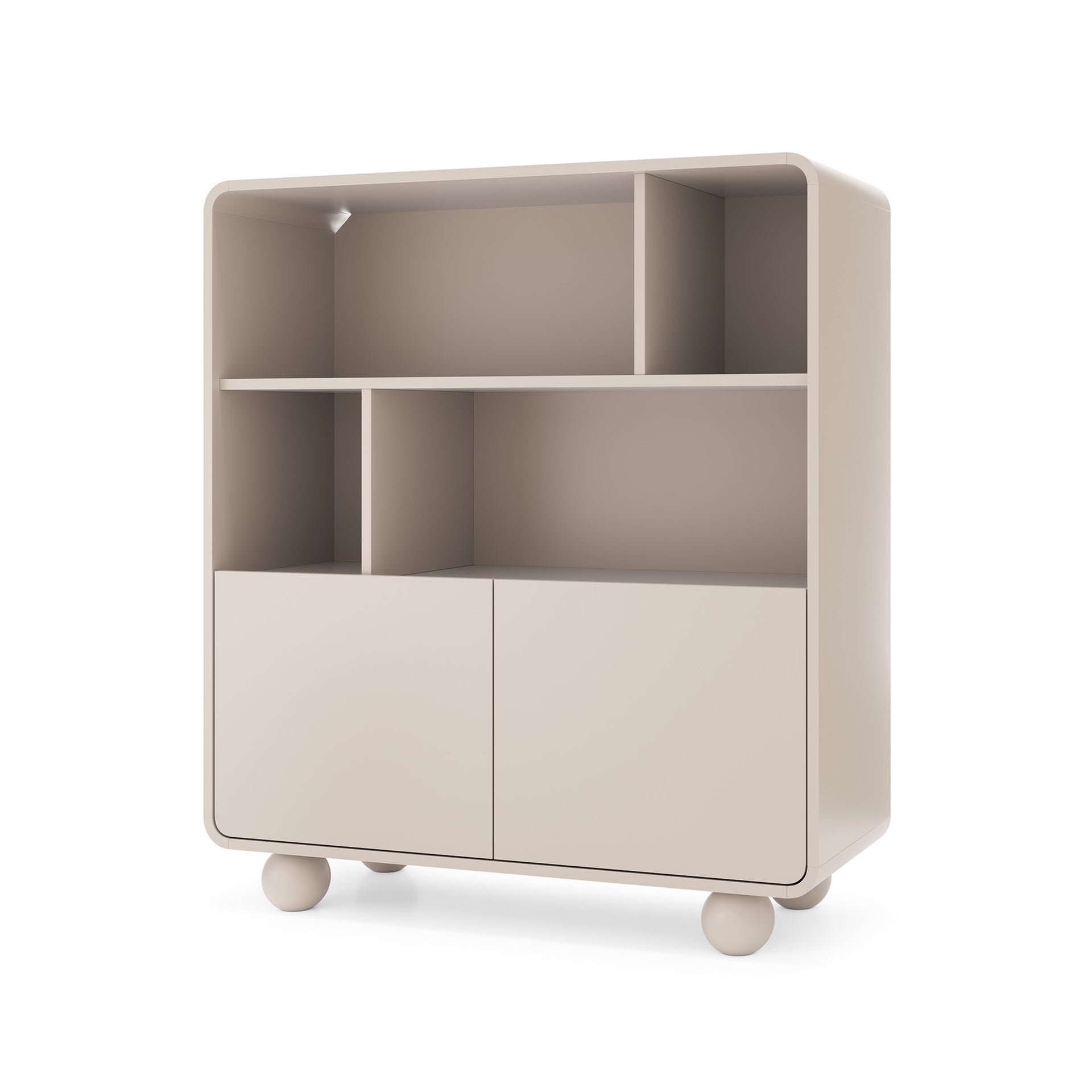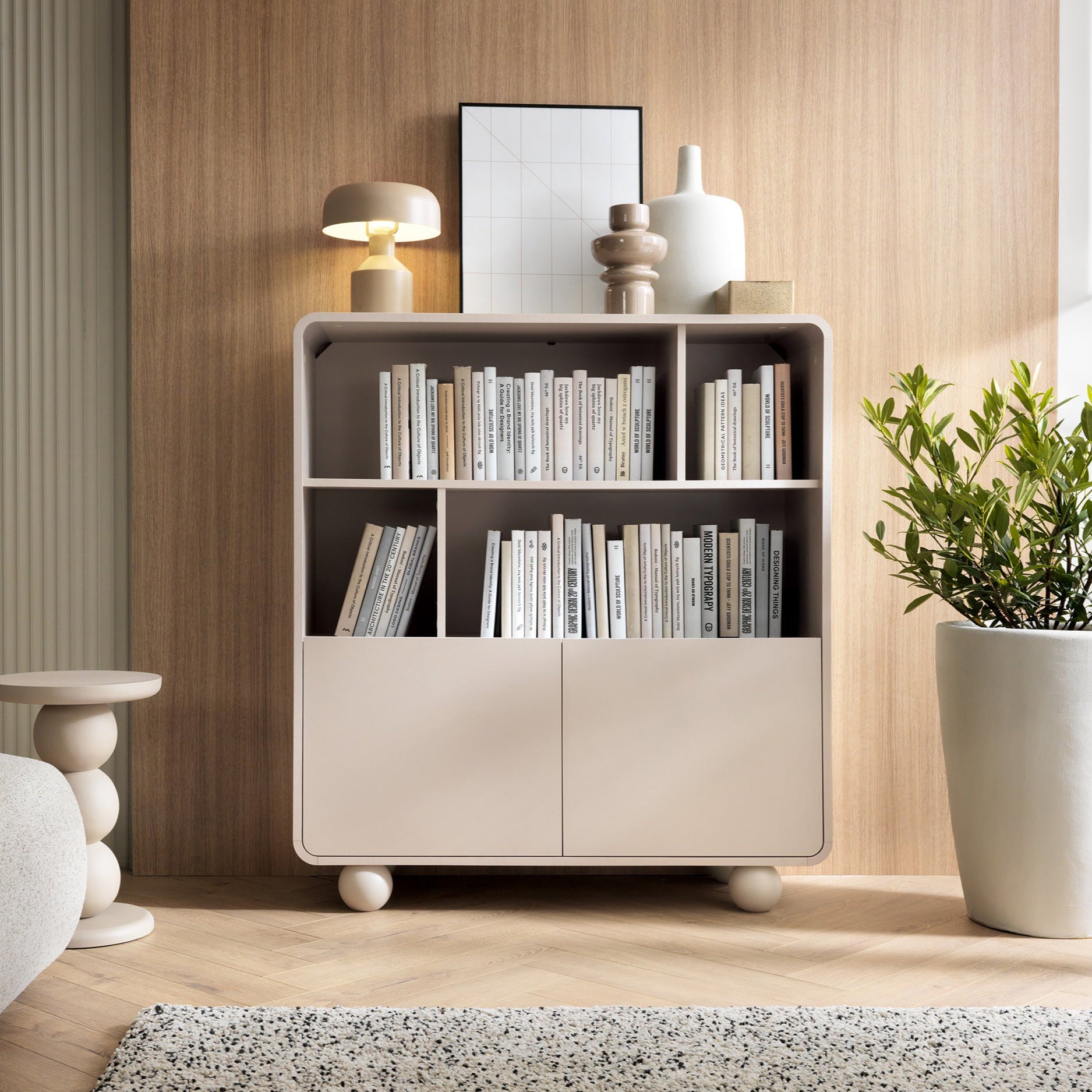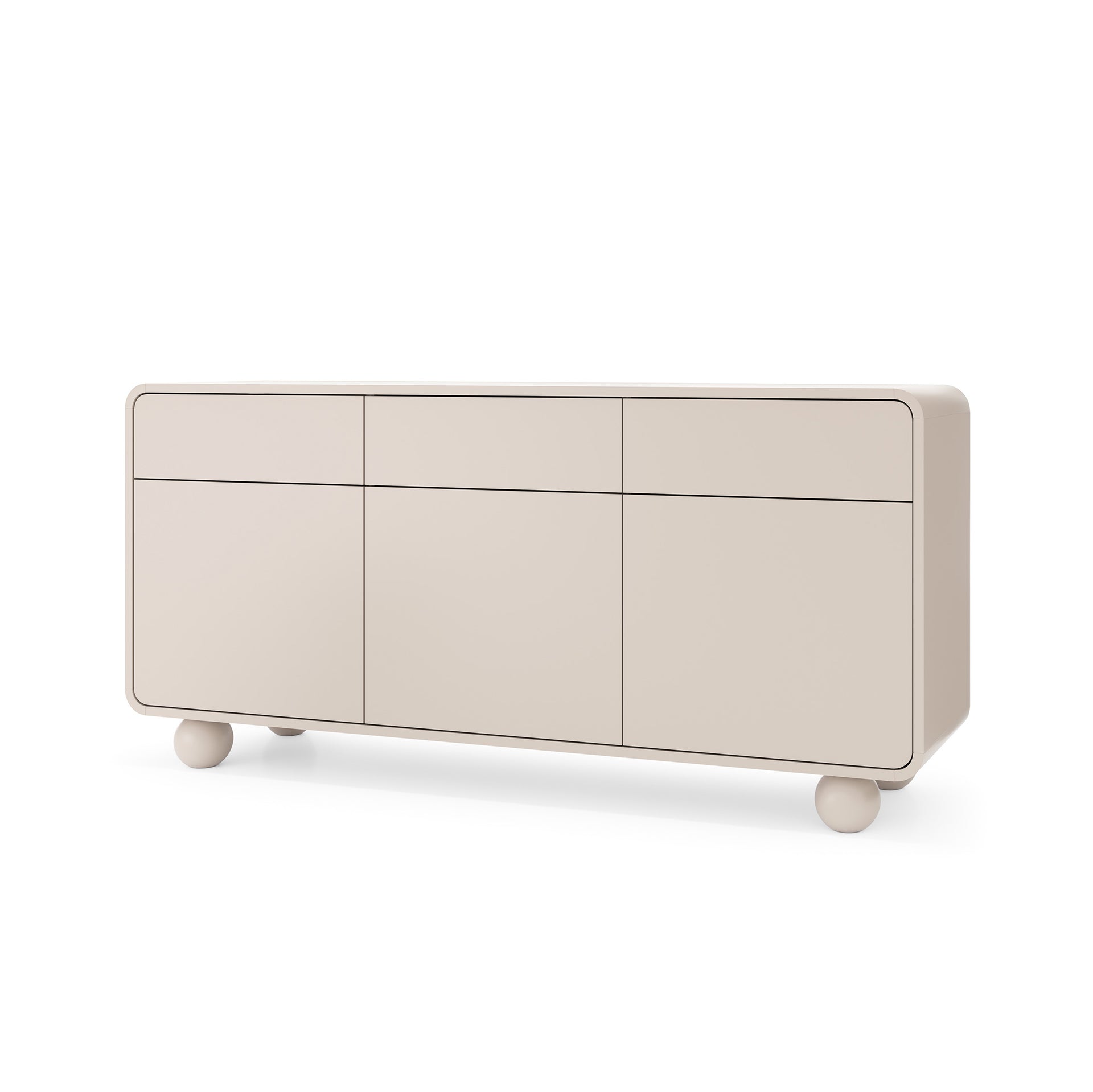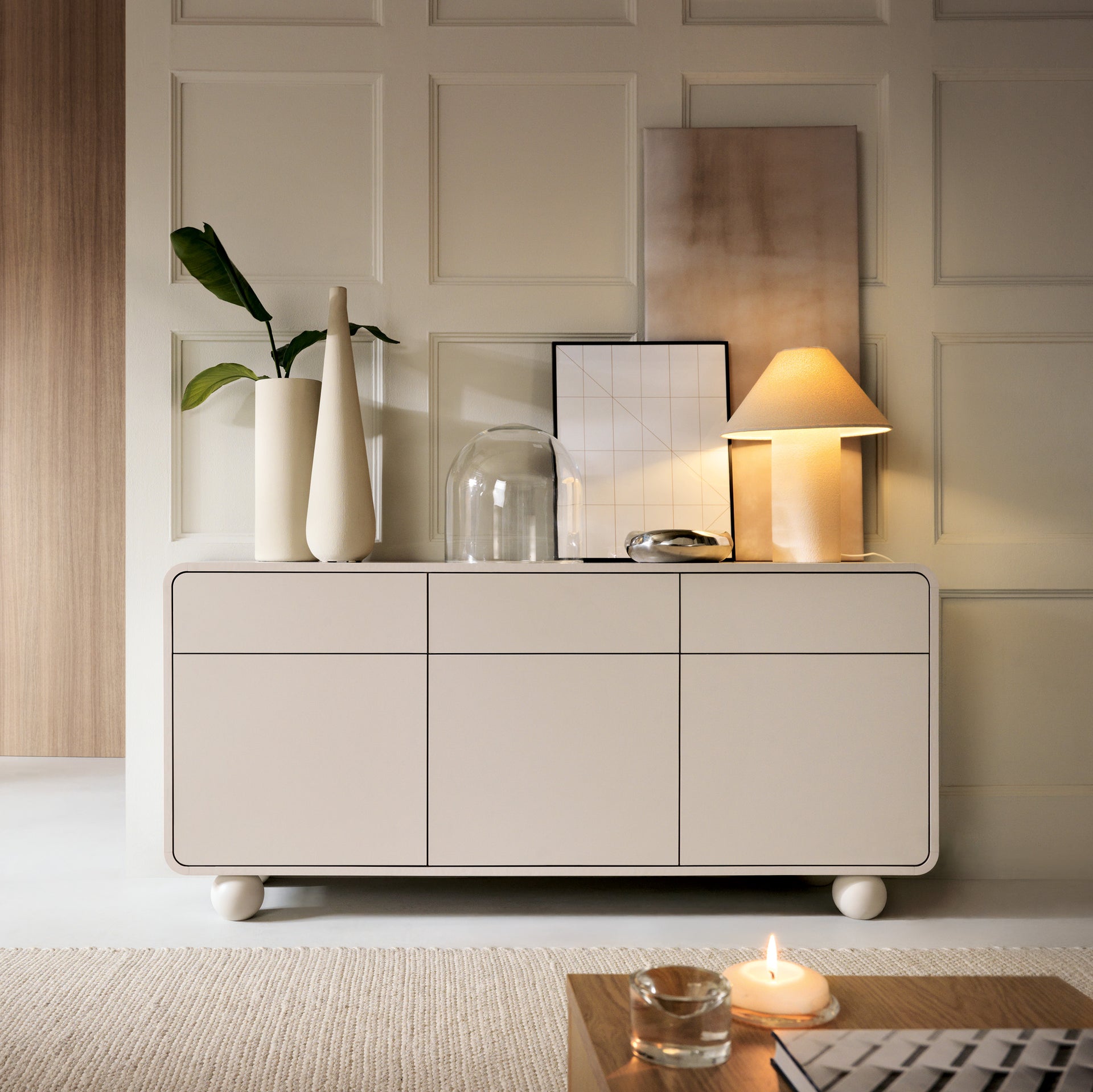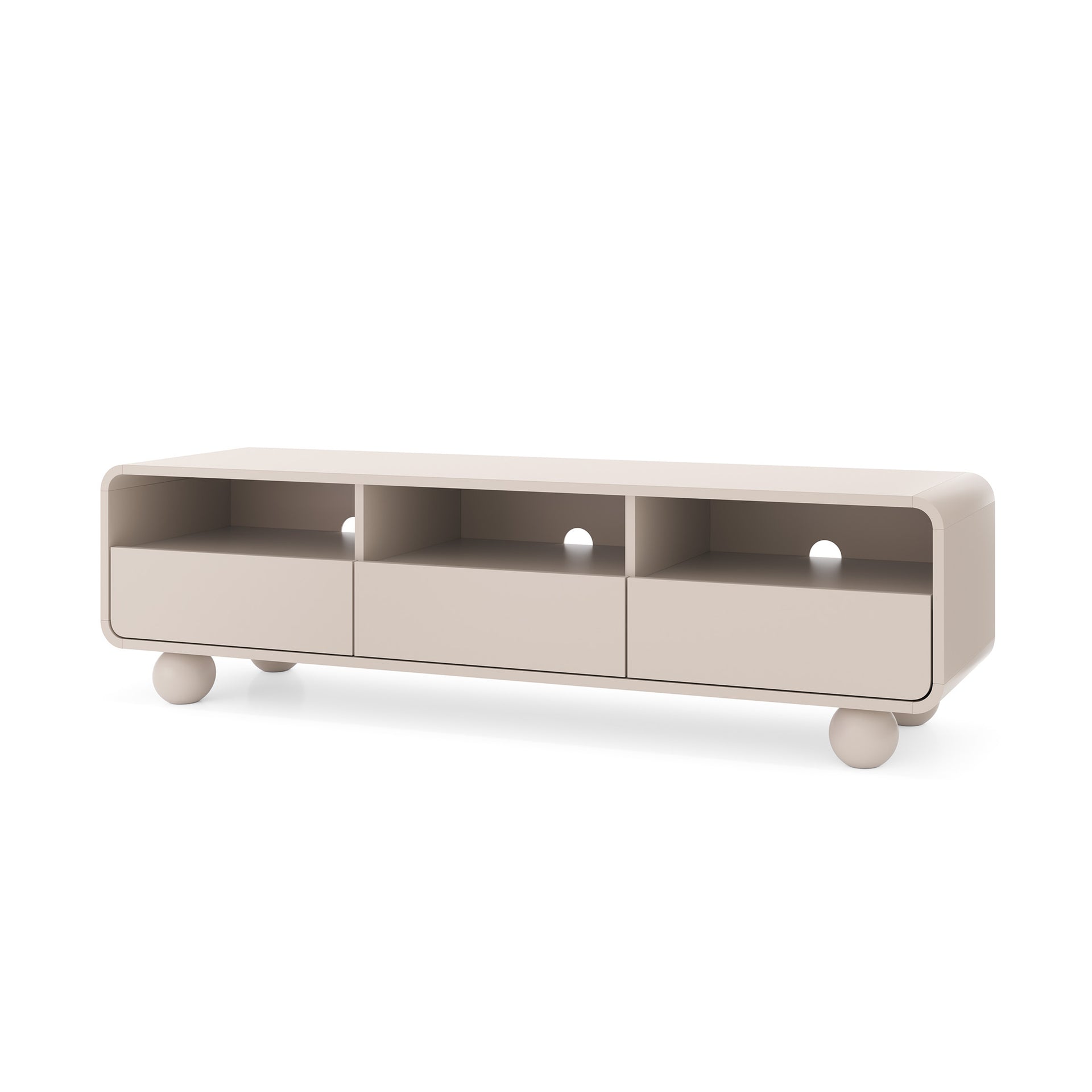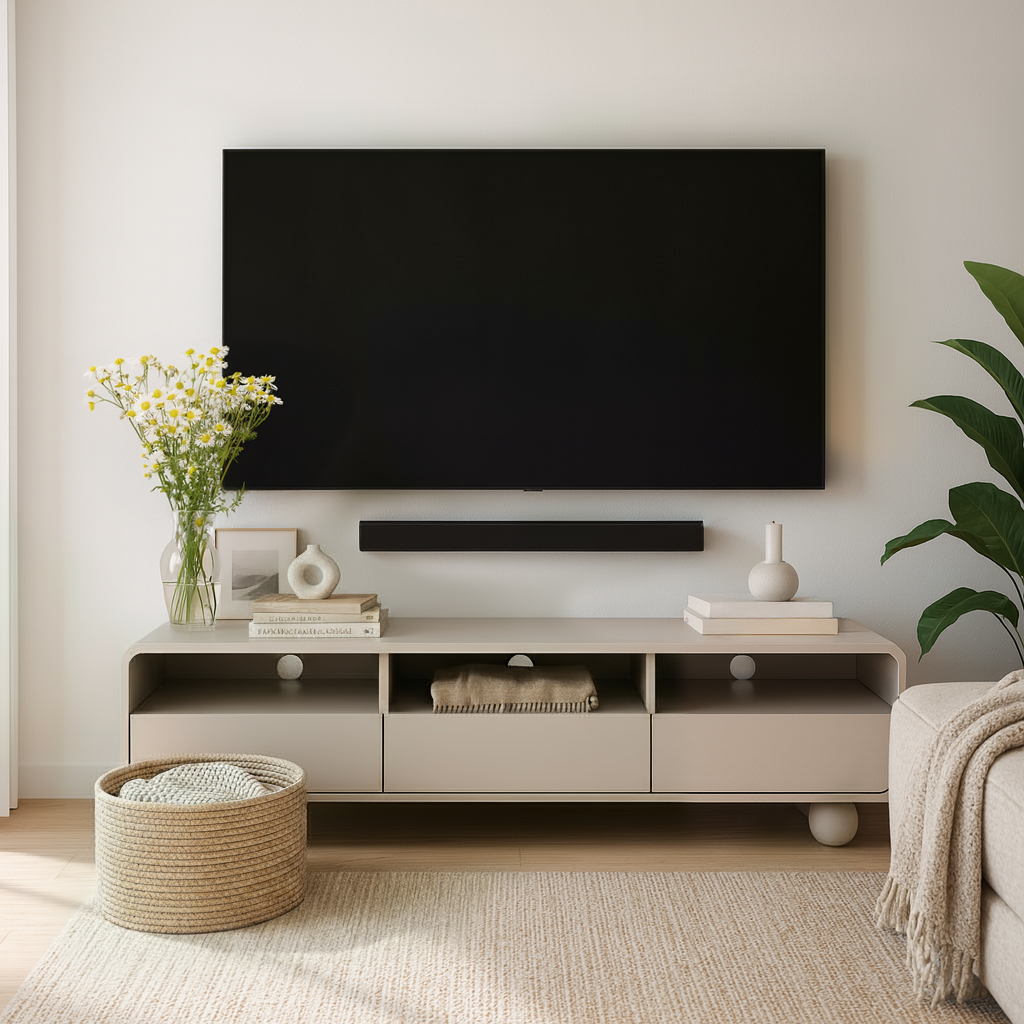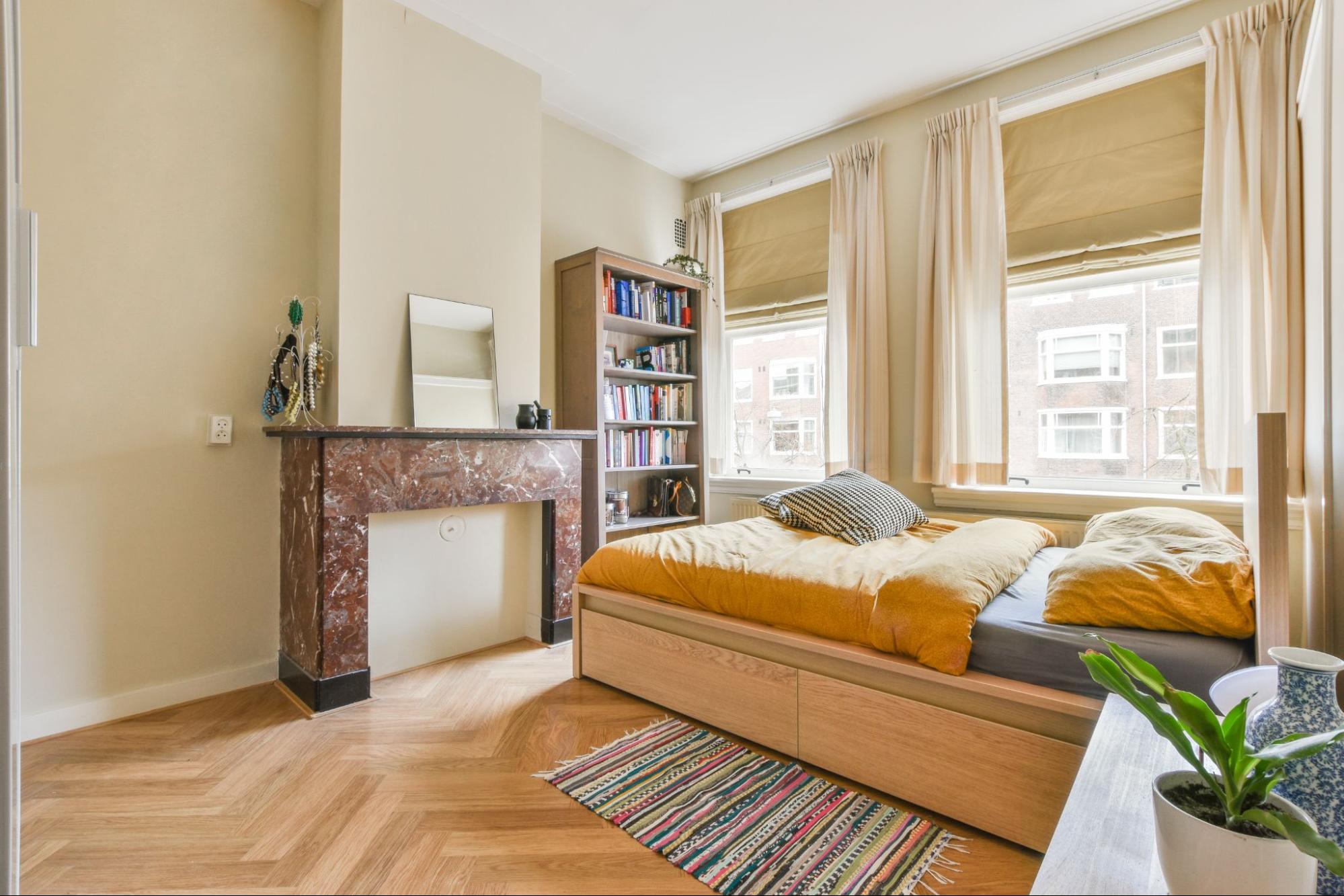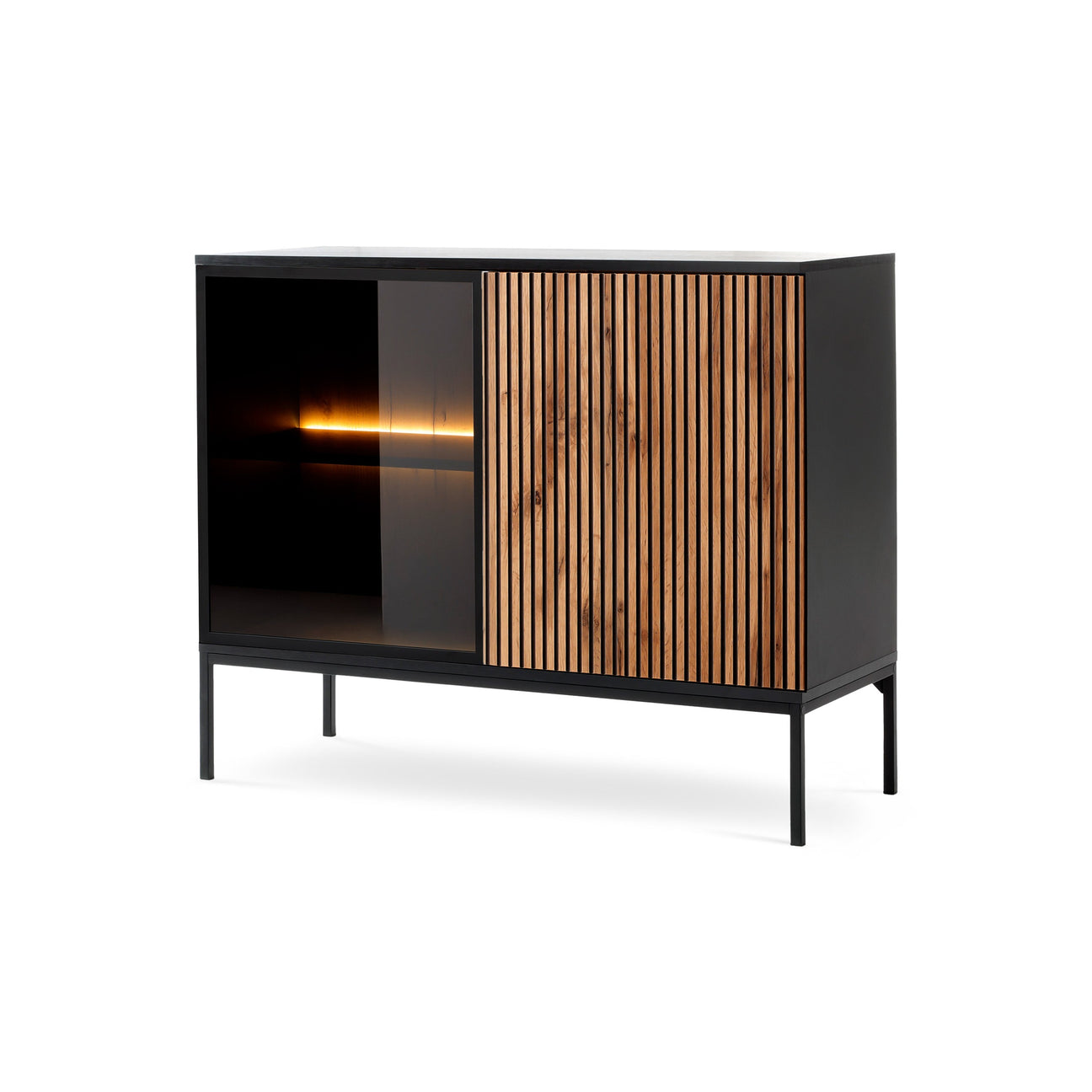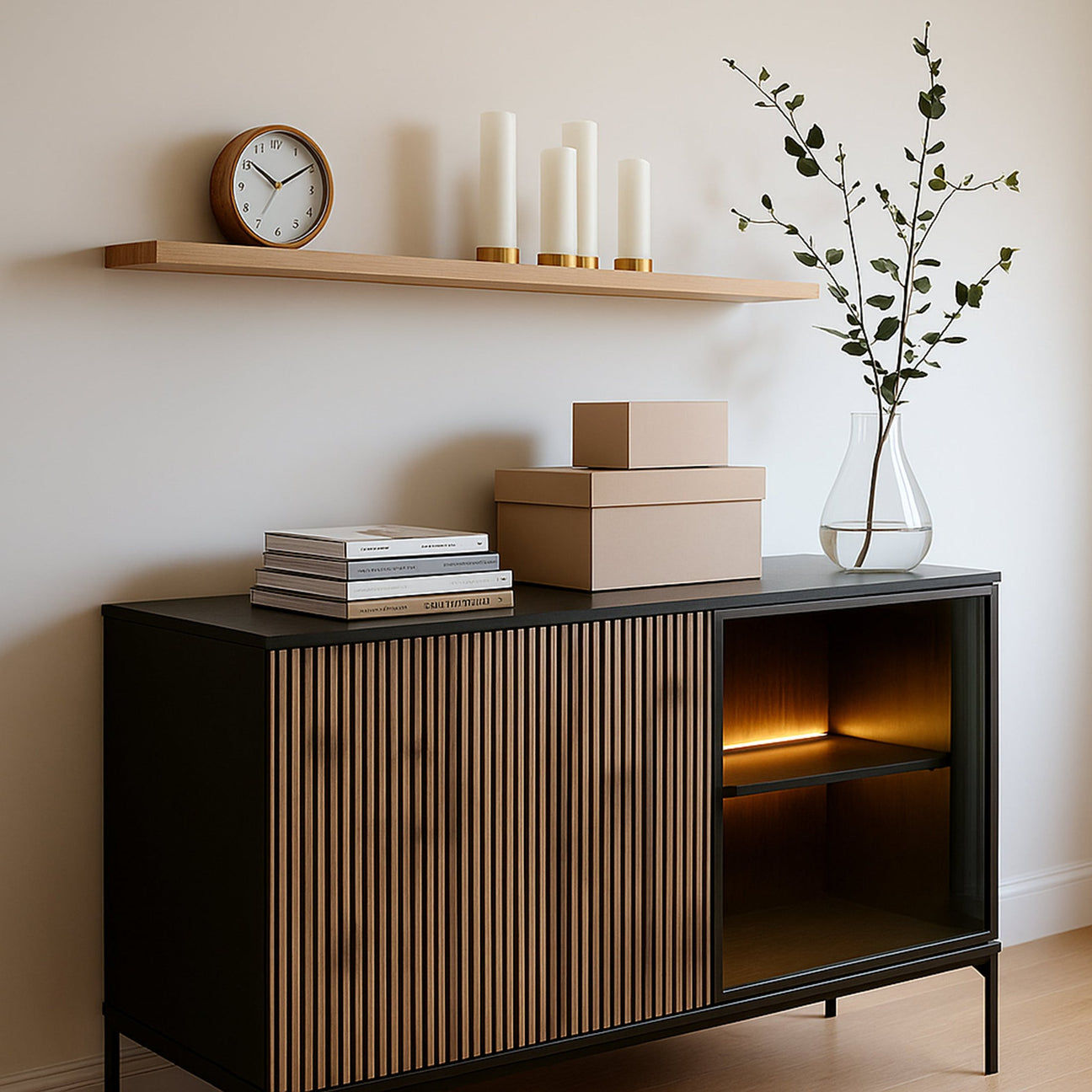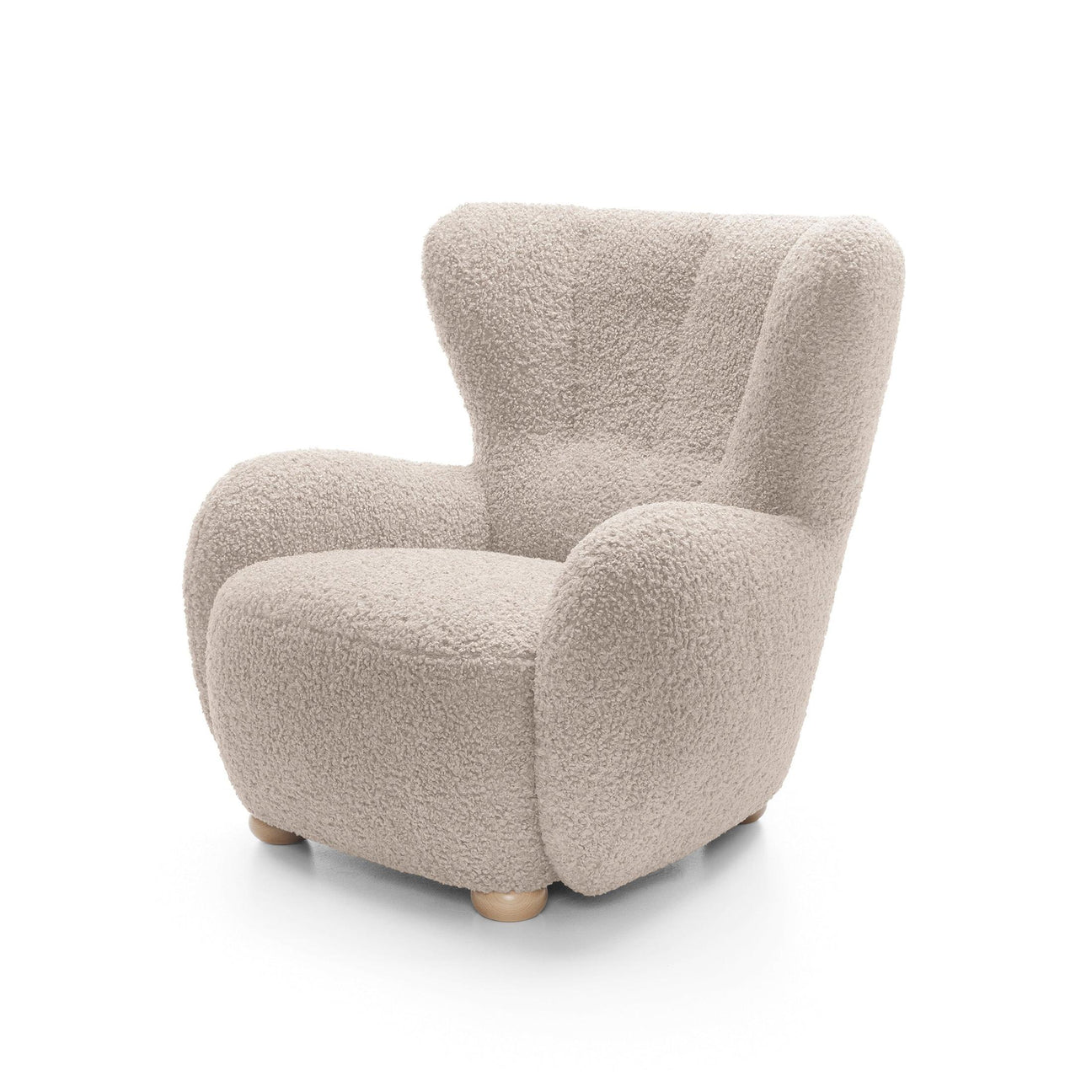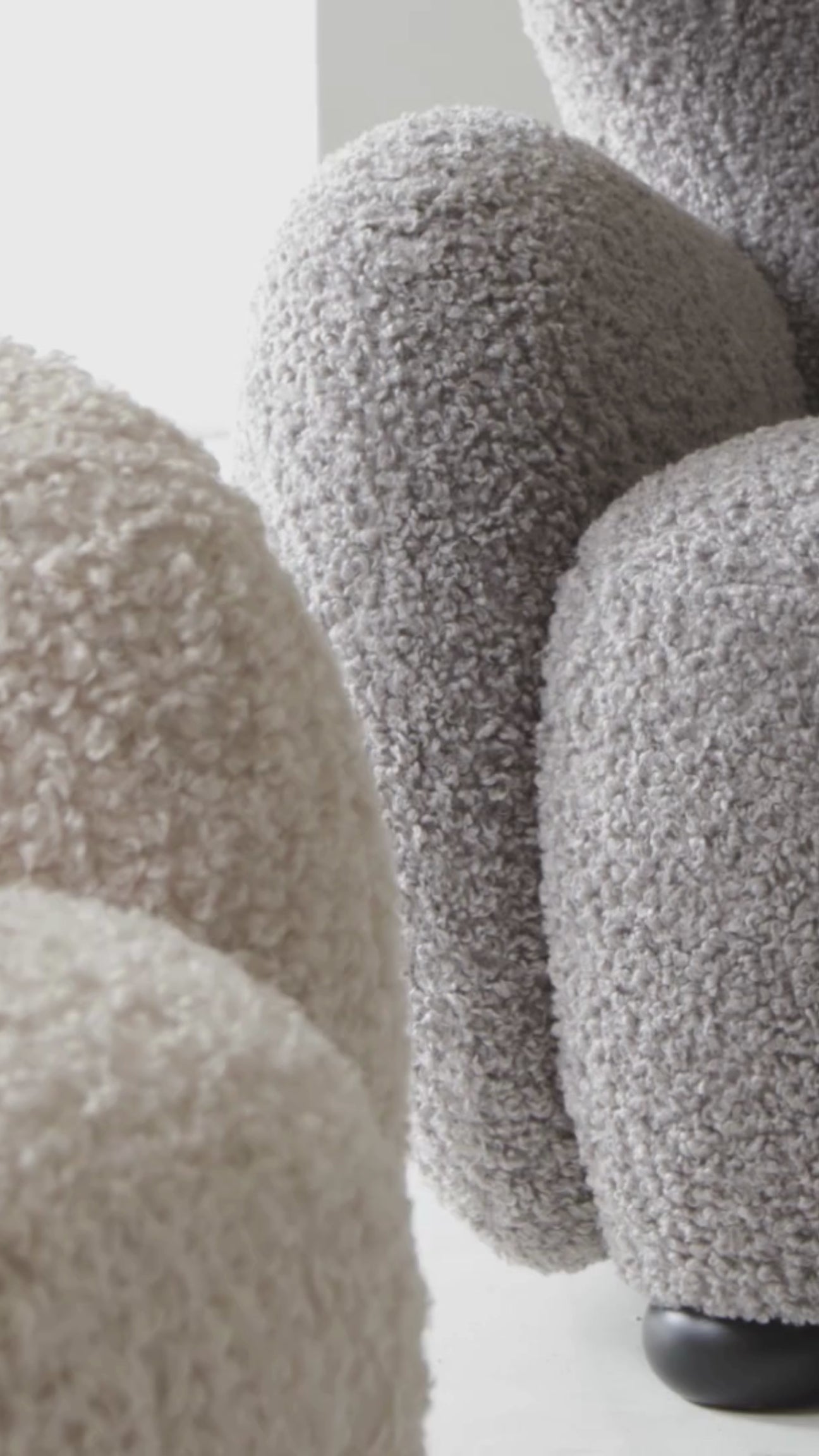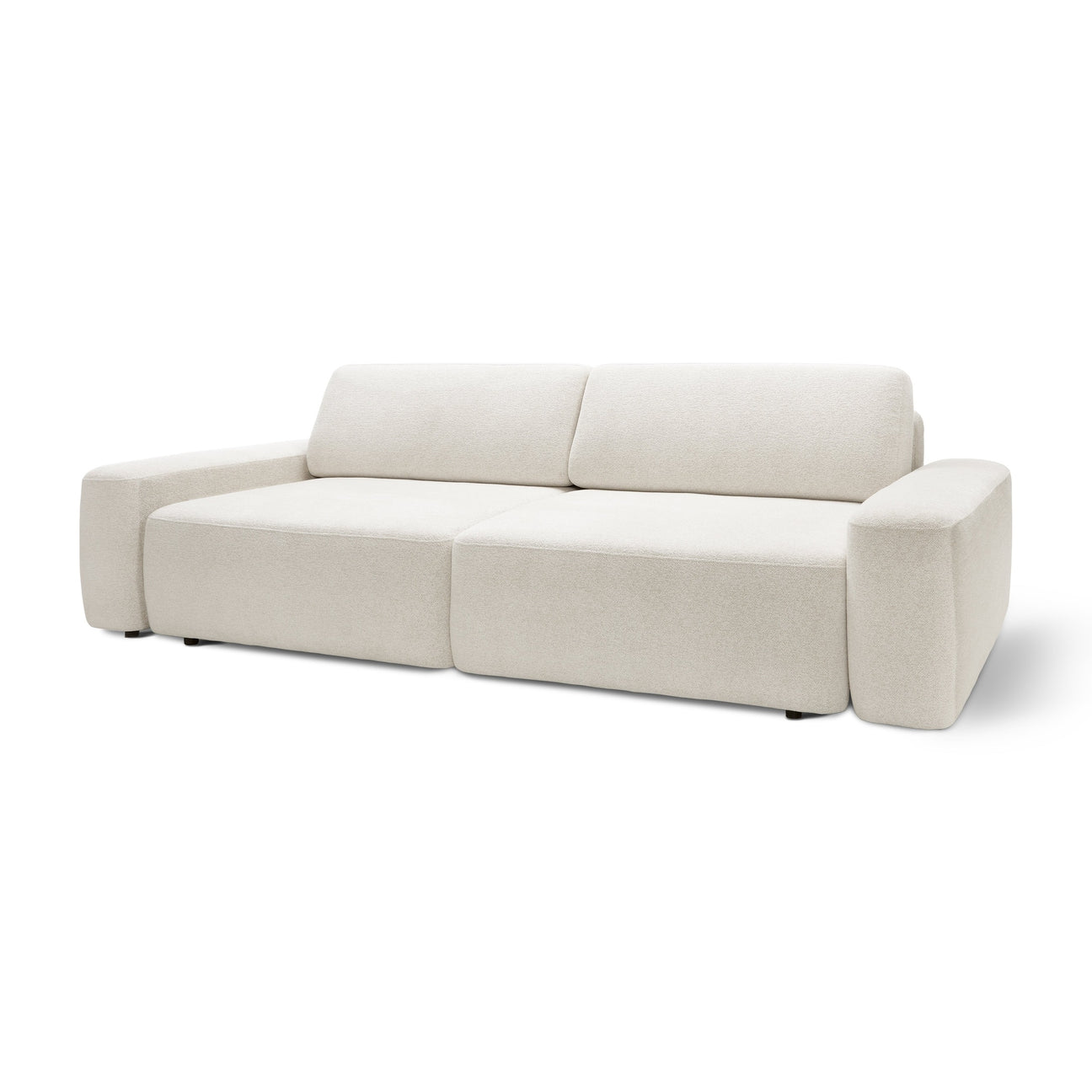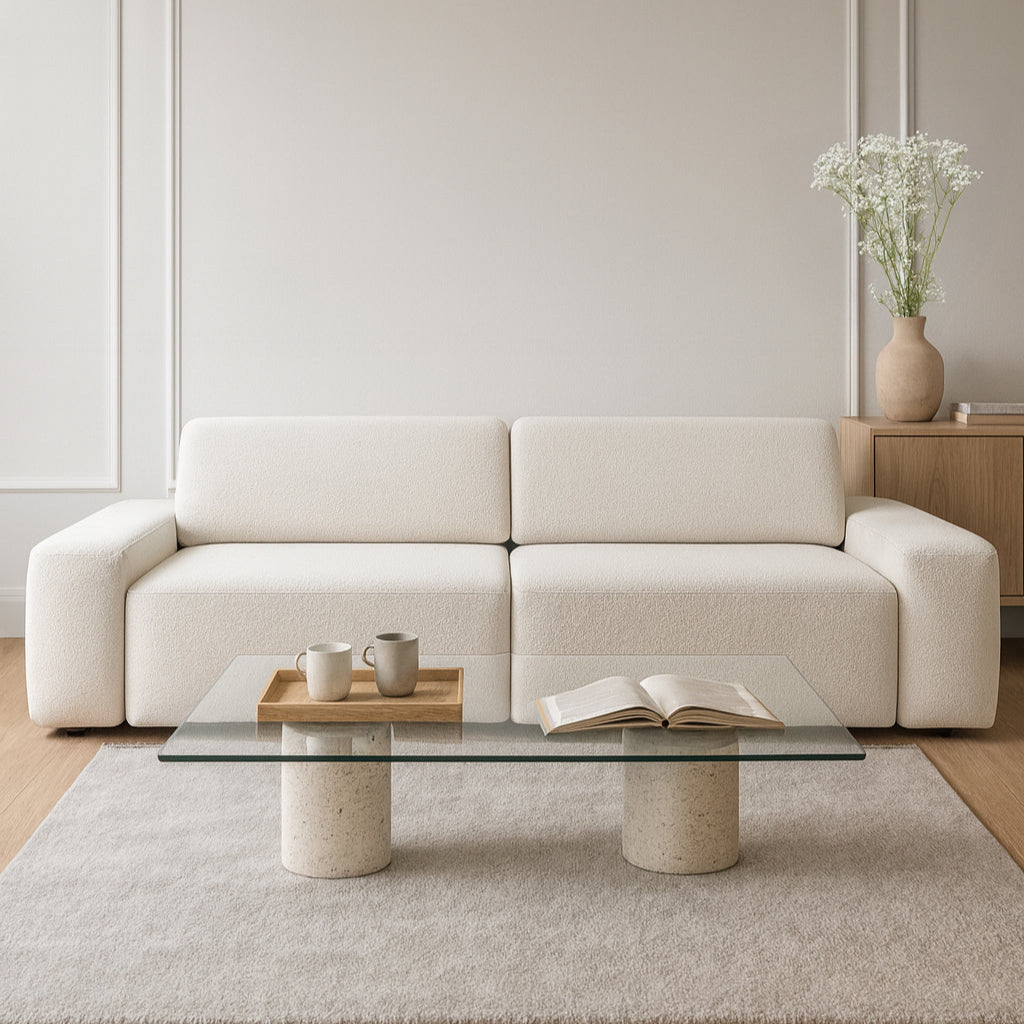A small space doesn't have to mean cramped. With a few tried-and-true design tricks, you can make even a studio apartment feel spacious and cozy at the same time. Visually enlarging a space is an art that combines the psychology of perception with thoughtful design. Here's a practical guide to techniques that will give your room extra square meters—at least visually.
Colors as a tool for expanding space
Light colors are the foundation of any interior design strategy. White, cream, and light beige reflect light, creating a feeling of openness and freshness. However, this doesn't mean you have to live in a sterile, hospital-like interior. The key is to use color wisely and utilize contrasts.
The 60-30-10 rule: Use 60% of a light base color, 30% of a mid-tone accent, and 10% of a vibrant color as a detail. This ratio maintains a spacious feel while adding character to the room.
A uniform color palette blurs the lines between furniture and walls, visually expanding the space. Pillovely understands this principle, offering furniture in harmonious, warm shades. Bottle green transforms into emerald with a pearly sheen, while neutral beiges acquire a powdery latte undertone – this cohesive color scheme creates the impression of a larger space without sacrificing coziness.
Light – the natural architect of space
Light is the most effective way to visually enlarge a room. The more light, the larger the space appears. Here's how to use it:
Maximize natural light: Replace heavy curtains with lightweight drapes or blinds that don't block windows. If privacy permits, completely opening the windows will yield the best results.
Multi-level lighting: Instead of a single central lamp, use multiple light sources at different heights. Floor lamps, wall sconces, and concealed lighting create depth and a larger feel in a room.
Mirrors as light multipliers: Strategically placed mirrors double the amount of light in a room. A large mirror opposite a window will not only reflect the landscape outside but also create the illusion of an additional window and a second room.

Furniture as allies of space
The choice and arrangement of furniture has a huge impact on the perception of a room's size. Here are the golden rules:
Furniture with legs allows the eye to flow freely underneath, making the floor seem larger and the entire room seem more spacious. Pillovely sofas combine a contemporary aesthetic with a touch of nostalgia, offering models with elegant legs that won't overwhelm small spaces.
Proportions and Sizing: One larger piece of furniture often works better than several smaller ones. A corner sofa becomes the natural center of home life and can replace a traditional sofa and armchairs, saving space and creating a cohesive relaxation area.
Multifunctionality: Pillovely chests of drawers were created for those who value order as much as the warmth of home. We combine craftsmanship tradition with modern design, creating furniture that not only stores but also decorates the interior. Furniture with dual functions is an investment in space – a chest of drawers can serve as a TV stand while also storing personal items.
Verticality as the key to success
Taking advantage of a room's height is an often underestimated strategy for expanding space.
Ceiling-level shelves: Tall shelves draw the eye upward, creating the illusion of a higher room. Even if the highest shelves are difficult to reach, their presence visually raises the ceiling.
Vertical lines in decoration: Long curtains from ceiling to floor, tall potted plants or vertical paintings – all of these make the room appear higher.
Wall-mounted cabinets instead of free-standing ones: The Nirwana TV cabinet from Pillovely is an example of a piece of furniture that can be hung on the wall, leaving the floor space free and creating an impression of lightness.

Organizing space according to the "less is more" principle
Order and minimalism are the foundation of spacious interiors. Every unnecessary item visually "eats" the space.
Hidden Storage : Pillovely chests of drawers not only store but also decorate the interior with their timeless lines and subtle nostalgia. Choosing furniture with closed storage compartments allows you to hide everyday items while maintaining the clean lines of the room.
The principle of a single focal point: Every room should have a single focal point around which the rest of the furnishings are organized. This could be a sofa that invites you to sit comfortably and embrace the homely atmosphere from the very first touch, or an elegant chest of drawers that serves as a central storage point.
Textures and materials – subtle support for space
A variety of textures adds depth to the interior, but in small rooms it is worth exercising moderation.
Smooth surfaces reflect light better than rough ones, helping to visually enlarge a space. Glossy furniture fronts, smooth upholstery fabrics, and glazed ceramic surfaces all contribute to the impression of spaciousness.
Solid upholstery fabrics: Upholstered beds were created for those who want to wake up feeling rested and surrounded by the warmth of a home. Choosing upholstered furniture in solid, light colors helps avoid visually cluttering the space.

Traffic flow as a design element
The way you move around a room influences the perception of its size. Free circulation paths make a room appear larger.
The Triangle Rule: A room's primary functions (e.g., sleeping, working, relaxing) should form a triangle with easily accessible sides. This is a classic interior design principle that also works well in small rooms.
Furniture against walls: Leaving the center of the room free creates a natural "center of movement" and makes the room feel more spacious. Armchairs and ottomans can be placed in corners, creating cozy alcoves without blocking the main space.
Details that make the difference
Sometimes it is the smallest details that determine the final impression of spaciousness.
Uniform Flooring: Whenever possible, maintain consistent flooring throughout the apartment. The absence of thresholds and varying materials helps the space flow seamlessly and feel larger.
Transparent elements: Glass tables, plastic chairs, and acrylic decorative elements take up space physically, but not visually. They're a clever way to add functionality without overwhelming the space.
The "one style" principle: Matching decorative pillows, lamps, and side tables create a complete set that you can bring into your home without a long search for "something that fits." Stylistic consistency makes the interior look well-thought-out and harmonious, which translates into the impression of a larger space.
At the end
Visually enlarging a space is a combination of thoughtful color choices, intelligent lighting, appropriate furniture selection, and attention to order. This turns your interior into a true style laboratory where boldness meets homely warmth.
Remember, the most important thing is to maintain a balance between functionality and aesthetics. A small interior can be just as comfortable and stylish as a large one – it just requires greater precision in planning and awareness in selecting each element. At Pillovely, we believe that furniture is more than just an object; it's a memory of your first morning in your own home, a nostalgic melody of silence that soothes after a long day. With the right approach, any room can become a space that not only feels larger but also brings joy every day.


